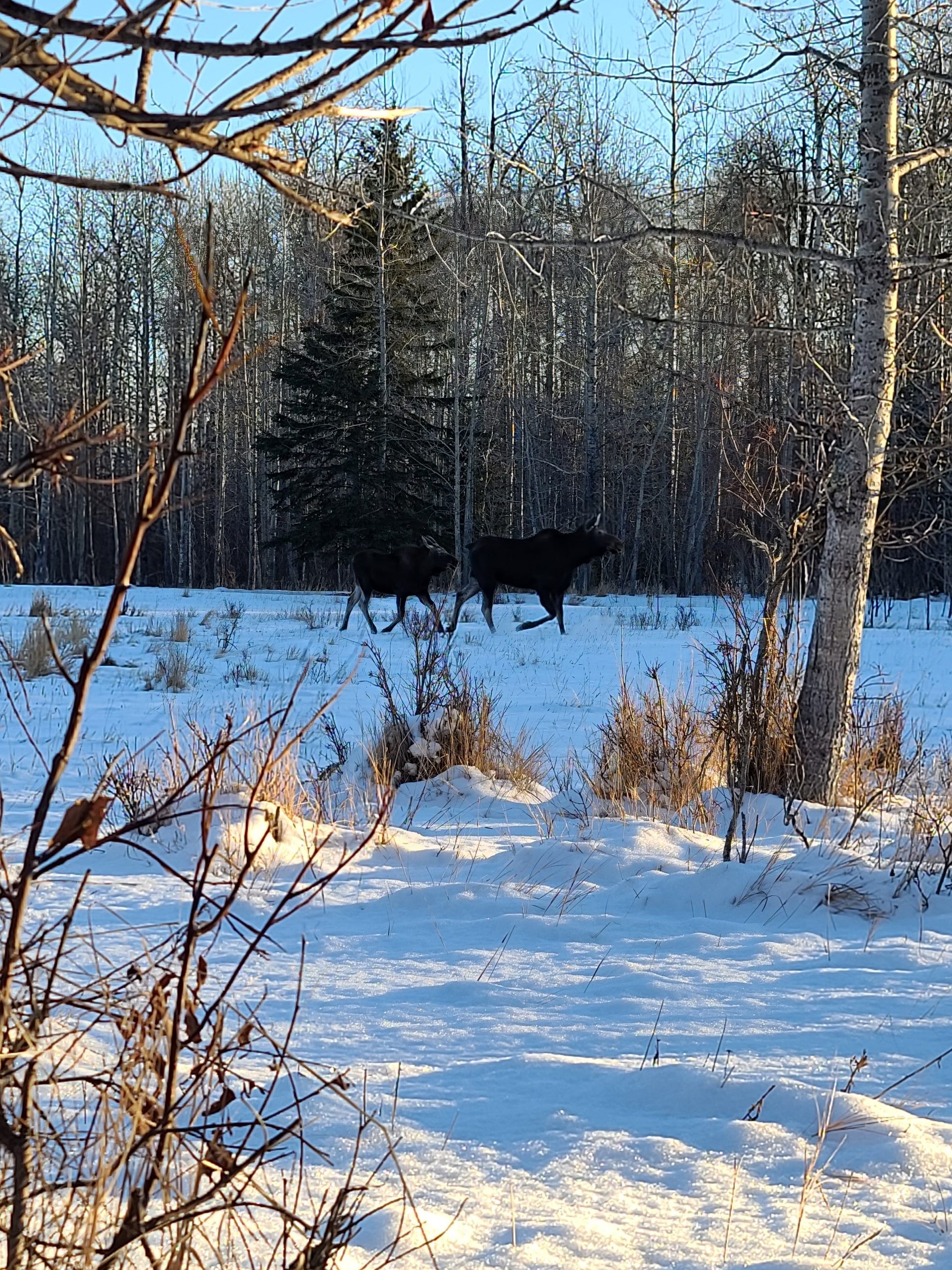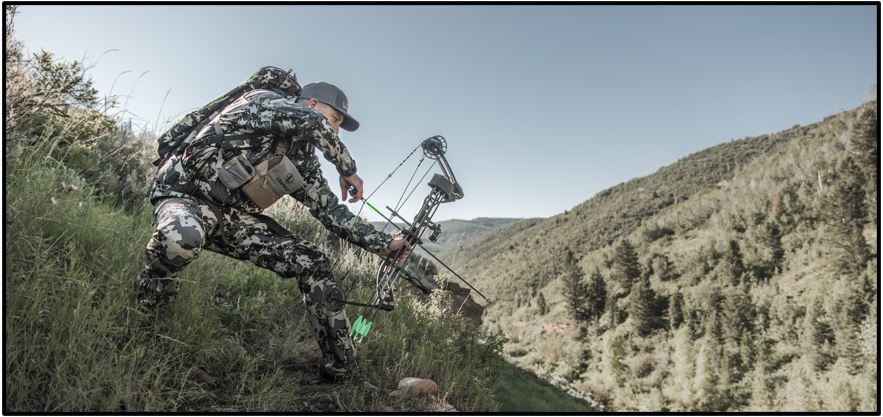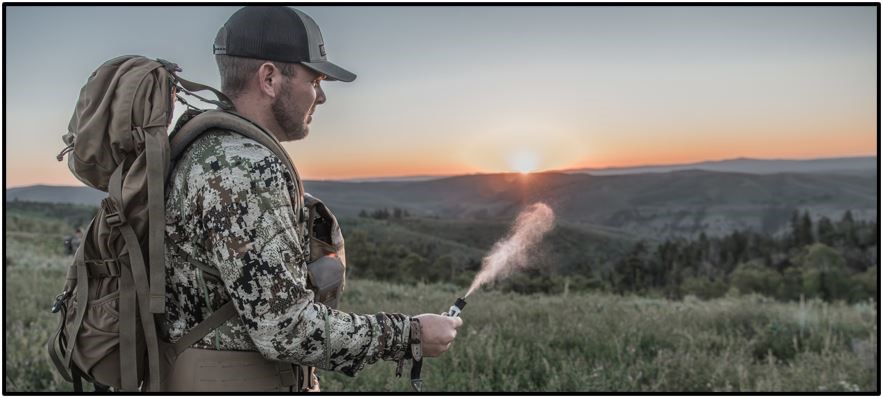Korth Group Outdoor Education, Stealth Tips When Stalking Game.

One often-overlooked aspect of stalking wild game is that you’re hunting these animals in their own habitat. They are extremely familiar with their surroundings, from the scents carried by the wind to the sounds of the landscape and the visual cues around them. Hunting, in many ways, can be seen as the art of outsmarting the animal to make a quick and humane harvest. While we, as humans, have certain advantages, such as advanced tools and complex reasoning, but when it comes to stalking game and getting as close as possible in their natural environment, we must adopt specific tactics to be successful. In this edition of Korth Group Outdoor Education, we’ll explore a few areas that provide ways for staying as stealthy as possible when making a stalk on game.

NOISE CONTROL
It’s important to remember that ungulates like deer, elk, and moose have large, highly sensitive ears, capable of detecting even the faintest sounds. To minimize noise while walking, selecting the right footwear is crucial. Soft, flexible boots with rubber soles are ideal for muffling footsteps, whereas stiff, heavy, and clunky boots can easily give you away. Depending on the weather and terrain, removing your boots and stalking in socks can be a useful tactic. This method is often employed by professional bowhunter Cameron Haynes.
In addition, mastering stealthy walking techniques, like the heel-to-toe approach, allows you to move quietly. By placing your foot down slowly and deliberately, you reduce the chances of snapping twigs or crunching leaves.
Timing your movements with natural environmental sounds, such as wind gusts or rustling leaves, is another effective way to stay undetected. While many hunters avoid high winds due to the unpredictability of their scent, strong winds can work in your favor by masking your noise. If you use the wind to cover your sounds, it can become an asset rather than a disadvantage.
Lastly, ensure your gear is soundproof. Hunting packs, harnesses, and any loose accessories should be secured and silenced with tape or fabric wraps to prevent rattling. This principle also applies to your clothing. While fleece or soft cotton might not be ideal in rain or snow, these materials produce little to no noise compared to rainproof fabrics, making them excellent choices for quiet movement.
SCENT MANAGEMENT
On top of their hearing, it’s crucial to consider the advanced sense of smell that ungulates possess, which far exceeds the abilities of humans. These animals rely heavily on their noses to detect predators, making scent control just as important as sound management. We’ve explored the power of scent control in greater detail in a previous article, but this should brush up on a few quick points.
Playing the wind is key. Always keep the wind in your face to prevent your scent from drifting toward the game and alerting them to your presence. Using scent-elimination products like sprays or detergents specifically designed for hunting gear can help neutralize human odor and foreign smells. Additionally, applying a natural cover scent by rubbing dirt, leaves, or pine needles on your clothing can further mask your smell, blending you into the environment.

CAMOUFLAGE AND CONCEALMENT
While ungulates don’t have eyesight as sharp as their hearing or sense of smell, blending into your surroundings is still essential for a successful engagement. Wearing appropriate camouflage that matches the environment and season can provide you with the advantage of disappearing into the landscape. Just as important is breaking up your silhouette by using natural cover like trees, bushes, draws and valleys, or foliage to avoid standing out. Finally, avoiding unnatural movement is critical. Animals are highly attuned to quick or jerky motions so keeping your movements slow, smooth, and deliberate will make it harder for them to detect you, allowing you to close the distance without drawing attention.
HAVE PATIENCE
Slowly stalking game requires extreme patience, as rushing not only increases your noise but also makes you more visible to animals. Taking your time ensures that each step is calculated and quiet. Equally important is knowing when to be still. Animals are highly attuned to motion, often noticing movement before anything else. Pausing frequently to observe your surroundings can be more effective than constant movement.
Additionally, closely observing the behavior of the animals is key. If they show signs of alertness, such as raising their heads or pricking their ears, stop immediately and wait. Resuming your stalk only when they’ve relaxed will help you maintain the upper hand.
VISUAL CUES AND POSITIONING
Managing your visual cues and positioning is just as important as controlling your noise or scent. One of the key tactics is to keep a low profile and using the terrain to your advantage. By staying low and avoiding the skyline, you reduce the likelihood of being spotted. Additionally, avoid direct eye contact, as some animals may interpret it as a threat. Keeping your head slightly lowered while still scanning your surroundings allows you to remain aware without appearing aggressive. Lastly, use shadows to your benefit. Move in shaded areas, especially during early morning or late afternoon when the sun is low, as this helps you stay less visible and better concealed from wary eyes.

Successfully stalking wild game requires a combination of patience, precision, and understanding of the animals’ natural senses. From controlling your noise and scent to blending into the environment and using natural cover, each tactic plays a vital role in staying undetected. By mastering slow, deliberate movements, observing animal behavior, and taking advantage of shadows and the terrain around you, you increase your chances of executing a successful engagement. Remember, the key to outsmarting these animals lies in adapting to their environment and using the right techniques to minimize your presence.
